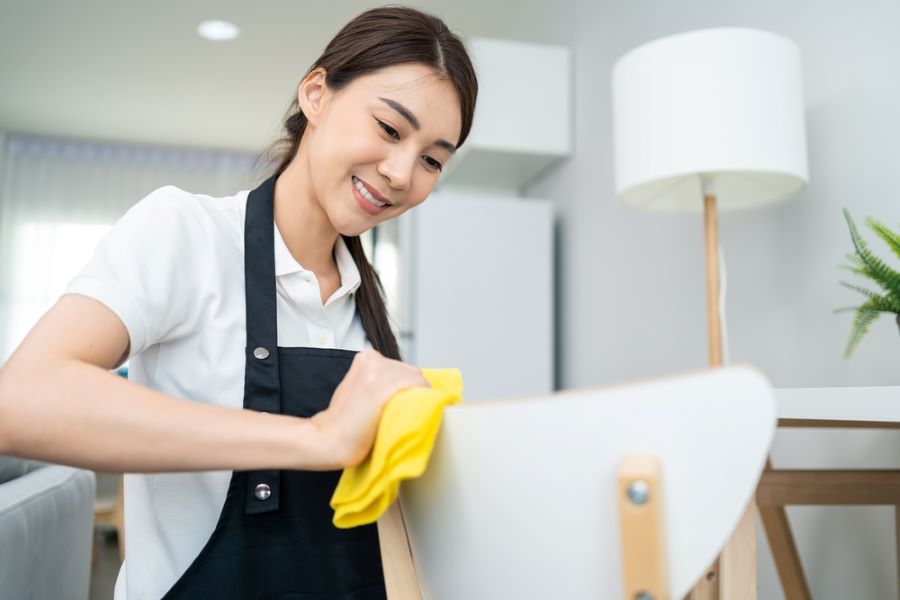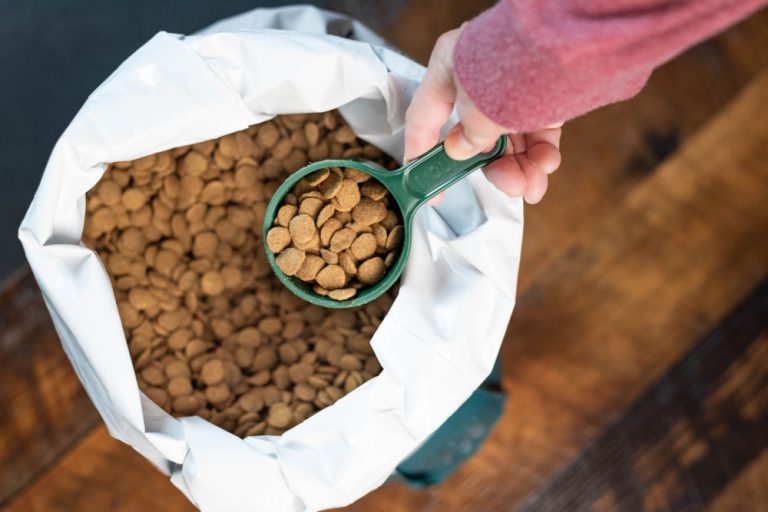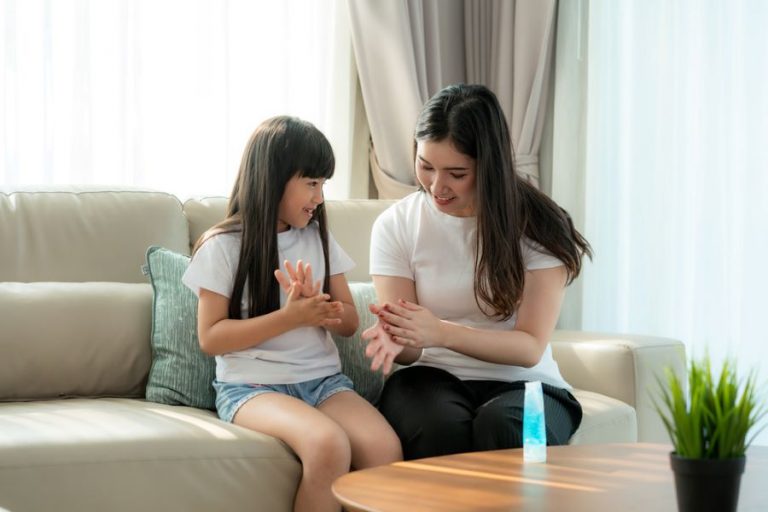What is the Difference Between Cleaning, Sanitizing, and Disinfecting?
As busy moms juggling work, family, and home, keeping your surroundings clean and healthy is a top priority. But have you ever wondered about the difference between cleaning vs. sanitizing vs. disinfecting? These terms are often used interchangeably, but they actually refer to distinct processes. Understanding the difference is critical to ensuring your family’s safety and well-being.
What is the Difference Between Cleaning, Sanitizing, and Disinfecting?
Cleaning
Cleaning forms the essential first step in maintaining a healthy living space. It’s the process of removing visible dirt, grime, and debris from surfaces, essentially giving your home a good scrub. Think of it as tidying up before tackling a deeper clean.
To achieve a clean environment, you typically use a combination of soap, water, and cleaning agents. These tools work together to lift and remove dirt particles from surfaces like countertops, floors, and appliances. While cleaning is undoubtedly important, it’s important to remember that it primarily focuses on visible dirt and doesn’t eliminate the unseen world of germs.
Sanitizing
Sanitizing takes the cleaning process a step further by significantly reducing the number of germs on surfaces to a level considered safe for public health. This step involves using chemical disinfectants or heat to kill a portion of the remaining microorganisms.
To ensure food safety, sanitizing is essential for items that come into direct contact with food, such as kitchen utensils, cutting boards, and countertops. Additionally, high-traffic areas like bathrooms and doorknobs benefit greatly from sanitizing to minimize the spread of germs. While cleaning removes visible dirt, sanitizing focuses on reducing the invisible threats that can cause illness.
Disinfecting
Disinfectant sprays such as Solbac are primarily effective on hard, non-porous surfaces like countertops, doorknobs, and bathroom fixtures. To ensure the best results, carefully follow the product instructions, as disinfectants often require a specific contact time to be effective. This means leaving the disinfectant on the surface for a certain period before wiping it away.
While disinfection is particularly vital in healthcare settings, where the risk of infection is high, it’s also highly recommended for homes with sick individuals or people with weakened immune systems. By diligently disinfecting frequently touched surfaces, you can significantly reduce the spread of germs and create a healthier living environment for yourself and your family.
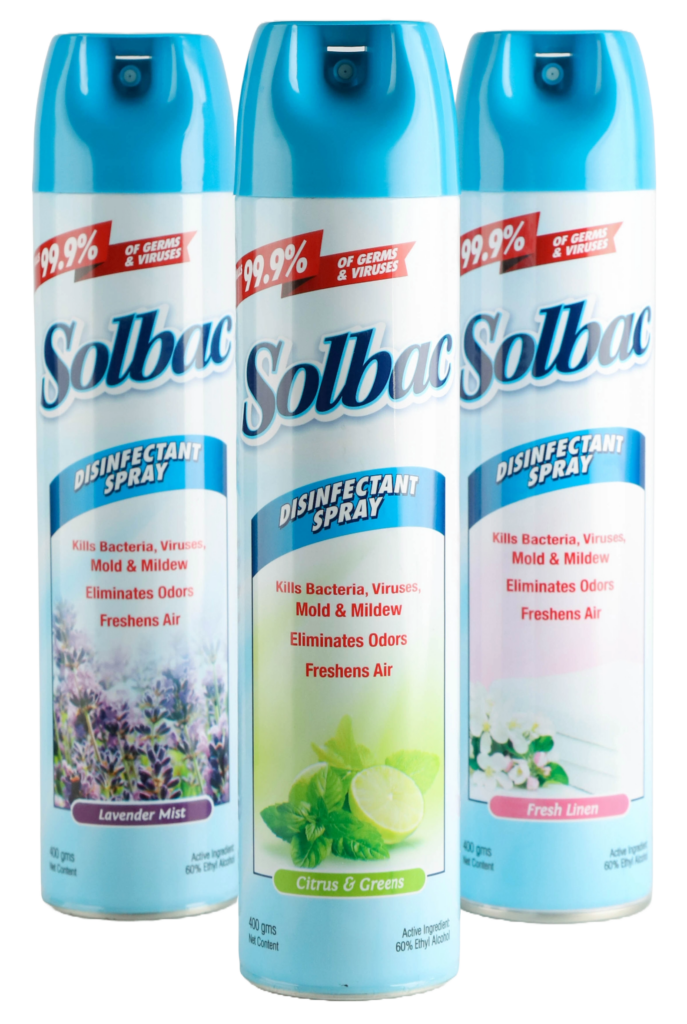
When to Use Which?
Knowing the difference between cleaning vs. disinfecting vs. sanitizing is key to identifying when and where to use each process. Here’s a breakdown:
- Cleaning: This should be done regularly in all areas of your home. It’s the foundation for a clean and healthy environment.
- Sanitizing: Focus on surfaces that come into contact with food, mouths, or bodies. This includes kitchens, bathrooms, and toys.
- Disinfecting: Prioritize areas where germs can easily spread, such as bathrooms, kitchens, and high-touch surfaces when someone is sick.
Choosing the Right Products
With a dizzying array of cleaning products lining the supermarket shelves, it can be challenging to determine which ones are truly effective and safe for your family. To make informed decisions, look for products registered with the FDA and clearly labeled with their intended use.
It’s important to understand that not all cleaning products are created equal. Some may simply clean surfaces, while others can sanitize or disinfect. Always read product labels carefully to ensure you’re using the right product for the job. For example, a gentle all-purpose cleaner might be suitable for daily kitchen wipe-downs, but a stronger disinfectant spray is necessary to kill germs on bathroom surfaces.
Keep in mind that when using disinfectants, precision is key. Adhering to the product’s instructions is crucial for optimal results. Pay close attention to the contact time, which is the amount of time the disinfectant needs to remain on a surface to kill germs effectively. Rushing the process can compromise its effectiveness.
Additionally, proper ventilation is essential when using chemical disinfectants. These products often release fumes that can be irritating to the eyes, nose, and throat. Open windows, switch on your fans, or wear protective gloves and masks as recommended on the product label.
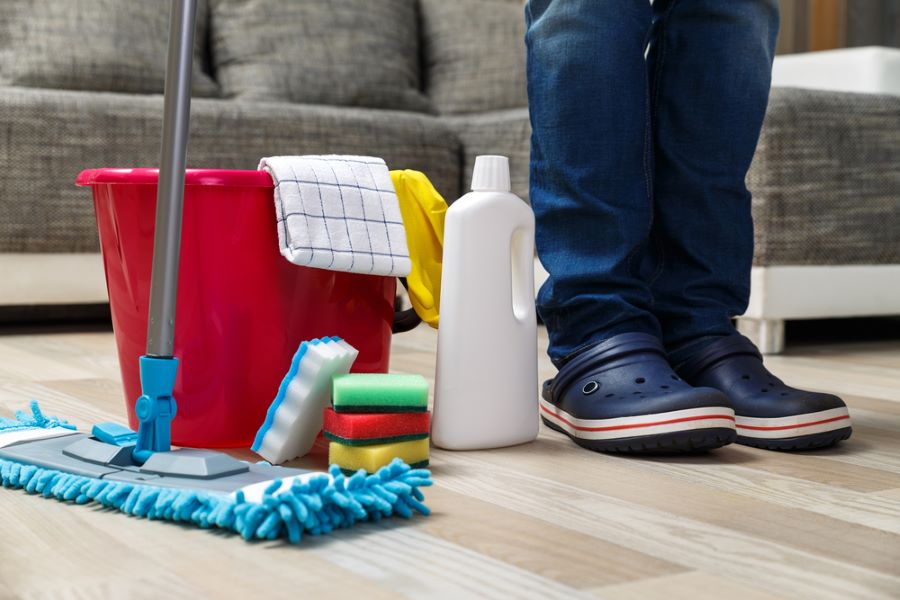
Disinfecting for a Healthier Home
Disinfecting might seem like overkill, but it can make a significant difference in protecting your family’s health. By understanding the difference between cleaning, sanitizing, and disinfecting, you can make informed choices about how to keep your home clean and germ-free.
Remember, prevention is key. Encourage good hygiene practices like handwashing, covering your mouth when coughing or sneezing, and avoiding sharing personal items. By combining these efforts with regular cleaning, sanitizing, and disinfecting, you can create a healthier home for you and your loved ones.
Let’s protect our families together!

